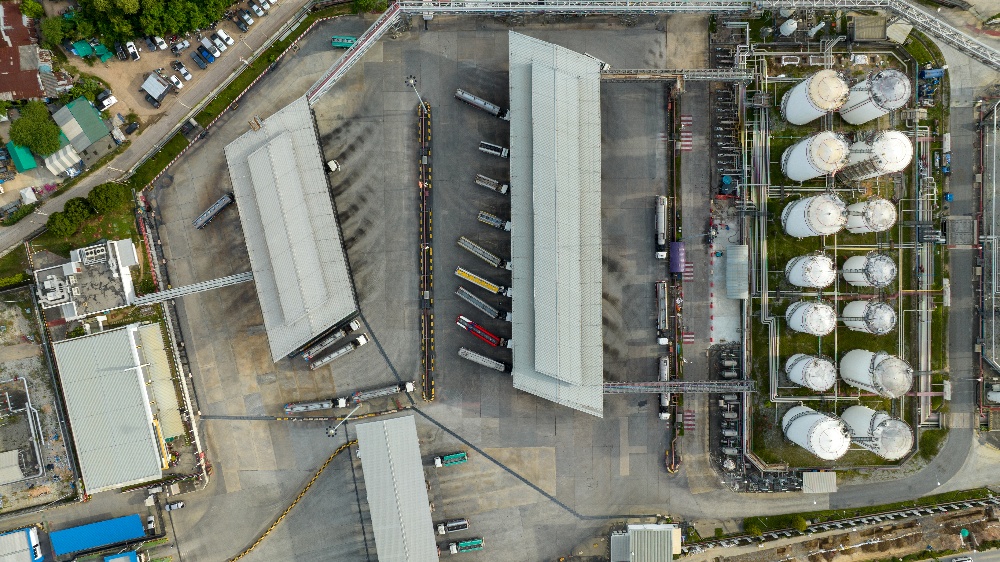Optimizing yard management for manufacturing facilities

The manufacturing sector remains a crucial component of the global economy, with the small, medium, and large companies operating in the US accounting for about 11% of the country's GDP. Manufacturing facilities play an increasingly vital role in enhancing operational efficiency and optimizing global supply chain resources. The European Union, China, and the United States are the top three global manufacturing powerhouses and have seen a significant increase in the number of manufacturing facilities in recent years.
The bedrock to manufacturing success lies in the smooth functioning of their operations, which includes their manufacturing lines and inbound and outbound processes. Businesses strive to maintain a robust manufacturing process by timely securing materials and assets, ensuring employee safety, and operating efficiently.
But manufacturing businesses often focus on one area, like production lines, more than the others. Other areas like warehousing and yard management receive much lesser attention, hence usually have high scope for improvement and more significant ROI. Managing production yards, due to their sheer size, can be a challenging task for managers, who often struggle to maintain visibility in all areas. The most common issue with yard management is a lack of visibility. Fortunately, modern technology and software offer solutions that can significantly improve yard management practices.
But first, let's understand some of the most common challenges manufacturing businesses face with their yard management.
7 Common Yard Management Challenges of Manufacturing Businesses
Yard management issues increase exponentially with the scale of the operations. The higher the product flow, the bigger the yard - translating into a need to manage more orders and vehicles. That is when the companies that do not prepare for this scale-up start to feel the issues related to yard management. Some common challenges are:
-
Lack of real-time visibility or inability to track vehicles in the yard in real-time
-
No planning or visibility in prioritization of vehicle docking
-
Manual processes such as gate Check Ins and Outs
-
High turnaround time (TAT) of vehicles
-
Poor collaboration between stakeholders such as drivers, spotters, warehouse and yard operators
-
No real-time visibility for the management in tracking the in-time and out-time, operation start time/end time
-
Delays due to inefficient loading processes and poor yard management software
Companies can resolve these challenges by leveraging specialized yard management tools. Yard management systems offer functionality and flexible strategies to meet company objectives and enhance efficiency. These include visualization of a facility through a live graphic to see activity in real-time and scheduling to direct traffic flow for the best-optimized flow. As a result, companies can identify areas for improvement in their manufacturing systems with the right solution. These streamline yard operations and minimize dwell times, demurrage charges, and detention fees.
For more content, visit our resource center
Yard Management Systems: The Key to Efficiency and Visibility in Manufacturing
With manufacturing companies, keeping production running efficiently is the top priority. It requires visibility to production capacities, incoming raw material supply, and outgoing finished goods to avoid inventory build-up in any part of the process.
A yard management system helps precisely with these objectives. It allows shippers and carriers to schedule shipments, get real-time visibility into trailer locations, and monitor loading and unloading status. For some manufacturers, trailers serve as an extension of their warehouse, where raw materials are stored in the yard. With a yard management system in place, it is possible to keep track of the products in each trailer, allowing for quick replenishment of warehouse stocks by directing trailer moves to the correct doors for unloading. Additionally, asset tracking becomes more accurate and secure with the increased real-time visibility offered by these systems.
Manufacturing yards must function on a schedule, and data becomes a significant driving factor in achieving it. Yard operations contain a large amount of data and when accumulated with efficient software and analyzed correctly, this data offers awareness of vital insights. For example, estimating the average trailer loading time by size, planning operations, and scheduling accordingly. Such insights can move the company from the guesstimates and gut feelings to data-driven processes, which unlock tremendous potential for efficiency increase and cost optimizations.
In conclusion, yard management is a critical area that manufacturing facilities should prioritize to enhance operational efficiency, optimize resources, and minimize costs. The challenges facing yard management are significant, but with specialized yard management tools and software, these issues can be resolved.
By leveraging yard management systems, manufacturing facilities can gain real-time visibility, streamline operations, minimize delays, and optimize the flow of goods, leading to increased efficiency and cost savings. With data-driven processes, companies can unlock tremendous potential for efficiency increases, making yard management optimization an essential investment for any manufacturing facility looking to remain competitive in today's global economy.


